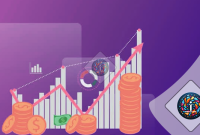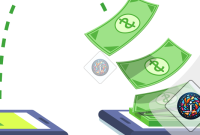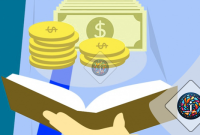Personal Loans: Your Guide To Smart Borrowing
Personal loans can be a powerful financial tool, offering a lump sum of money that you can use for a variety of purposes. Whether you’re looking to consolidate debt, finance a home improvement project, cover unexpected expenses, or even fund your education, understanding how personal loans work is crucial for making informed financial decisions. This comprehensive guide will walk you through everything you need to know about personal loans, from understanding eligibility requirements and interest rates to developing a smart repayment strategy and avoiding common debt traps.
What is a Personal Loan?
A personal loan is a type of installment loan, meaning you borrow a fixed amount of money and repay it over a set period of time with regular payments. These payments typically include both principal (the amount you borrowed) and interest (the cost of borrowing). Personal loans are often unsecured, meaning they don’t require you to put up collateral, such as a house or car. However, some personal loans are secured, which can offer lower interest rates but also pose a greater risk if you default on the loan.
Unlike credit cards, which offer a revolving line of credit, personal loans provide a fixed sum upfront. This makes them suitable for one-time expenses or projects where you need a specific amount of money. The predictability of fixed monthly payments also helps with budgeting and financial planning.
Why Consider a Personal Loan?
Personal loans can be a valuable tool in various financial situations. Here are some common reasons why people choose to take out personal loans:
Debt Consolidation
Debt consolidation involves combining multiple high-interest debts, such as credit card balances or other loans, into a single personal loan with a lower interest rate. This can simplify your payments, potentially lower your monthly expenses, and save you money on interest in the long run. The key is to ensure that the new personal loan has a lower overall APR (Annual Percentage Rate) than the combined APRs of your existing debts.
Home Improvement
Many homeowners use personal loans to finance home improvement projects, such as renovations, repairs, or additions. While home equity loans or lines of credit (HELOCs) are other options, personal loans can be a good choice if you don’t want to risk your home as collateral or if you don’t have sufficient equity. They can also be quicker to obtain than home equity products.
Unexpected Expenses
Life is full of surprises, and sometimes those surprises come with unexpected costs. Personal loans can provide a financial safety net to cover emergency expenses such as medical bills, car repairs, or unexpected home repairs. It’s important to remember that a personal loan should be a last resort for emergencies and not a regular source of funds for unplanned spending.
Education Expenses
While student loans are the primary source of funding for higher education, personal loans can sometimes be used to supplement existing loans or cover expenses that student loans don’t cover, such as living expenses or textbooks. However, it’s generally advisable to explore all student loan options first, as they often come with more favorable terms and repayment options.
Other Major Purchases
Personal loans can also be used for other significant purchases, such as a new car, a wedding, or a vacation. However, it’s crucial to carefully consider whether taking out a loan for these types of expenses is a wise financial decision. Weigh the benefits against the cost of borrowing and the potential impact on your long-term financial goals.
Types of Personal Loans
Personal loans come in two main types: secured and unsecured.
Secured Personal Loans
Secured personal loans require you to provide collateral, such as a car, a savings account, or other valuable assets. The lender can seize the collateral if you fail to repay the loan. Because secured loans pose less risk to the lender, they often come with lower interest rates and more favorable terms. However, they also carry the risk of losing your collateral if you default.
Unsecured Personal Loans
Unsecured personal loans don’t require collateral. Instead, the lender relies on your creditworthiness and income to assess the risk of lending to you. Unsecured loans typically have higher interest rates than secured loans because they are riskier for the lender. However, they don’t put your assets at risk if you default.
Eligibility Criteria for Personal Loans
Lenders use various factors to determine your eligibility for a personal loan and the interest rate they will offer. These factors include:
Credit Score
Your credit score is a numerical representation of your creditworthiness, based on your credit history. Lenders use your credit score to assess your risk of defaulting on the loan. A higher credit score generally translates to lower interest rates and more favorable loan terms. A lower credit score may result in higher interest rates or even denial of the loan application. Check your credit report regularly for errors.
Credit History
Your credit history includes information about your past borrowing and repayment behavior. Lenders will review your credit history to see how you’ve managed credit in the past. A positive credit history with on-time payments and a low debt-to-credit ratio will increase your chances of approval. Negative marks, such as late payments, defaults, or bankruptcies, can negatively impact your credit score and make it harder to get approved for a loan.
Income
Lenders want to ensure that you have sufficient income to repay the loan. They will typically ask for proof of income, such as pay stubs, tax returns, or bank statements. The amount of income required will vary depending on the lender and the loan amount. Lenders will also look at your debt-to-income ratio (DTI), which is the percentage of your gross monthly income that goes towards debt payments. A lower DTI indicates that you have more disposable income and are less likely to default on the loan.
Debt-to-Income Ratio (DTI)
As mentioned above, DTI is a key factor in determining your loan eligibility. Lenders prefer borrowers with lower DTI ratios. A high DTI indicates that a significant portion of your income is already committed to debt payments, which makes you a riskier borrower. Generally, a DTI below 43% is considered good.
Employment History
A stable employment history demonstrates your ability to consistently earn income and repay the loan. Lenders may ask for information about your current and previous employers, as well as the length of your employment. A longer and more stable employment history will improve your chances of approval.
How to Apply for a Personal Loan
Applying for a personal loan involves several steps:
Check Your Credit Score
Before you start applying for loans, it’s essential to check your credit score. This will give you an idea of the interest rates and loan terms you’re likely to qualify for. You can obtain a free copy of your credit report from each of the three major credit bureaus (Equifax, Experian, and TransUnion) once a year through AnnualCreditReport.com.
Shop Around and Compare Offers
Don’t settle for the first loan offer you receive. Shop around and compare offers from multiple lenders, including banks, credit unions, and online lenders. Pay attention to the interest rate, loan terms, fees, and repayment options. Use online loan comparison tools to easily compare different offers side-by-side.
Gather Necessary Documents
Before you apply, gather all the necessary documents, such as proof of income (pay stubs, tax returns), proof of identity (driver’s license, passport), and proof of address (utility bill, lease agreement). Having these documents readily available will speed up the application process.
Complete the Application
Fill out the loan application carefully and accurately. Provide all the required information and double-check for any errors. Inaccurate information can delay the application process or even lead to denial.
Submit Your Application
Once you’ve completed the application, submit it to the lender. You may be able to submit the application online or in person, depending on the lender.
Wait for Approval
After submitting your application, the lender will review it and make a decision. The approval process can take anywhere from a few hours to a few days, depending on the lender and the complexity of your application.
Review the Loan Agreement
If your application is approved, carefully review the loan agreement before signing. Pay attention to the interest rate, loan terms, fees, repayment schedule, and any other conditions. Make sure you understand all the terms and conditions before you agree to the loan.
Accept the Loan
If you’re satisfied with the loan agreement, sign it and accept the loan. The lender will then disburse the loan funds to you, usually through a direct deposit to your bank account.
Understanding Interest Rates and Fees
Interest rates and fees are important factors to consider when choosing a personal loan. They determine the overall cost of borrowing.
Interest Rates
The interest rate is the cost of borrowing money, expressed as a percentage of the loan amount. Interest rates can be fixed or variable. Fixed interest rates remain the same throughout the loan term, while variable interest rates can fluctuate based on market conditions. A lower interest rate will result in lower monthly payments and less interest paid over the life of the loan.
APR (Annual Percentage Rate)
The APR is the total cost of the loan, including the interest rate and any fees, expressed as an annual percentage. The APR is a more accurate measure of the cost of borrowing than the interest rate alone because it takes into account all the associated fees. When comparing loan offers, focus on the APR to get a true picture of the cost.
Fees
Personal loans may come with various fees, such as origination fees, prepayment penalties, and late payment fees. Origination fees are charged by the lender to process the loan application. Prepayment penalties are charged if you pay off the loan early. Late payment fees are charged if you make a payment after the due date. Be sure to understand all the fees associated with the loan before you sign the agreement.
Repayment Strategies for Personal Loans
Developing a smart repayment strategy is crucial for managing your personal loan effectively and avoiding debt problems.
Budgeting
Create a budget that includes your loan payments and other expenses. This will help you ensure that you have enough money to make your payments on time. Track your income and expenses to identify areas where you can cut back and free up more money for loan repayment.
Automatic Payments
Set up automatic payments from your bank account to ensure that your loan payments are made on time. This will help you avoid late fees and protect your credit score. Most lenders offer automatic payment options, and some may even offer a small interest rate discount for enrolling.
Prioritize Repayment
Make your loan payments a priority. Treat them like any other essential bill, such as rent or utilities. If you’re struggling to make your payments, contact the lender immediately to discuss your options. They may be able to offer a temporary deferment or forbearance, or work with you to create a more manageable repayment plan.
Avoid Additional Debt
While repaying your personal loan, avoid taking on additional debt. This will help you stay on track with your repayment plan and prevent you from falling into a debt trap. Focus on paying down your existing debts before taking out any new loans or credit cards.
Consider Extra Payments
If you have extra money, consider making extra payments towards your personal loan. This will help you pay off the loan faster and save money on interest. Even small extra payments can make a significant difference over the life of the loan. Check your loan agreement for any prepayment penalties before making extra payments.
Common Mistakes to Avoid When Taking Out a Personal Loan
Taking out a personal loan can be a useful financial tool, but it’s important to avoid common mistakes that can lead to debt problems.
Borrowing More Than You Need
Only borrow the amount of money you actually need. Borrowing more than you need will result in higher monthly payments and more interest paid over the life of the loan. Carefully assess your needs and budget before applying for a loan.
Not Shopping Around for the Best Rate
Don’t settle for the first loan offer you receive. Shop around and compare offers from multiple lenders to find the best interest rate and loan terms. A lower interest rate can save you a significant amount of money over the life of the loan.
Ignoring the Loan Terms and Conditions
Carefully read and understand the loan terms and conditions before signing the agreement. Pay attention to the interest rate, fees, repayment schedule, and any other conditions. Make sure you understand all the terms and conditions before you agree to the loan.
Not Having a Repayment Plan
Develop a repayment plan before taking out a personal loan. This will help you ensure that you can afford the monthly payments and avoid late fees or defaults. Create a budget and track your income and expenses to ensure that you have enough money to make your payments on time.
Using the Loan for Non-Essential Purchases
Avoid using a personal loan for non-essential purchases, such as vacations or luxury items. Personal loans are best used for debt consolidation, home improvement, unexpected expenses, or education expenses. Using a loan for non-essential purchases can lead to debt problems and make it harder to achieve your financial goals.
Personal Loans and Your Credit Score
Taking out and managing a personal loan can have a significant impact on your credit score. Here’s how:
Positive Impact
Making on-time payments on your personal loan can improve your credit score. Payment history is the most important factor in determining your credit score, so consistent on-time payments will demonstrate your creditworthiness to lenders.
Negative Impact
Late payments or defaults on your personal loan can negatively impact your credit score. Late payments can stay on your credit report for up to seven years and can make it harder to get approved for loans or credit in the future. Defaulting on the loan can have even more serious consequences, including legal action and damage to your credit score.
Credit Mix
Having a mix of different types of credit, such as credit cards, installment loans, and mortgages, can also improve your credit score. Adding a personal loan to your credit mix can demonstrate that you can manage different types of credit responsibly.
Credit Utilization
If you’re using a personal loan for debt consolidation, be sure to close the credit card accounts that you’ve paid off. This will lower your credit utilization ratio, which is the amount of credit you’re using compared to your total available credit. A lower credit utilization ratio can improve your credit score.
Alternatives to Personal Loans
Before taking out a personal loan, consider exploring alternative options:
Credit Cards
If you need to borrow a small amount of money, a credit card may be a better option than a personal loan. Credit cards offer a revolving line of credit and can be convenient for making purchases. However, credit cards typically have higher interest rates than personal loans, so it’s important to pay off your balance in full each month to avoid interest charges.
Home Equity Loans or HELOCs
If you’re a homeowner, you may be able to borrow against your home equity using a home equity loan or a home equity line of credit (HELOC). These options typically have lower interest rates than personal loans, but they also require you to put your home up as collateral. If you default on the loan, you could lose your home.
Friends and Family
Borrowing from friends or family can be a less expensive option than taking out a personal loan. However, it’s important to treat the loan like a formal agreement and put the terms in writing to avoid any misunderstandings.
Savings
If you have savings, consider using them to cover your expenses instead of taking out a personal loan. This will avoid the cost of borrowing and prevent you from accumulating debt.
Negotiate with Creditors
If you’re struggling to pay your bills, try negotiating with your creditors to see if they can offer a lower interest rate or a more manageable payment plan. Many creditors are willing to work with customers who are experiencing financial difficulties.
When a Personal Loan Might Not Be the Right Choice
While personal loans can be helpful, they’re not always the best solution. Here are some situations where a personal loan might not be the right choice:
Lack of a Solid Repayment Plan
If you don’t have a clear plan for how you’ll repay the loan, it’s best to avoid taking one out. Without a solid budget and commitment to repayment, you risk falling behind and damaging your credit.
Unstable Income
If your income is unstable or unreliable, taking on the responsibility of a personal loan can be risky. Unexpected income fluctuations could make it difficult to meet your monthly payments.
Existing Debt Problems
If you’re already struggling with significant debt, adding another loan to the mix can worsen your financial situation. Consider seeking credit counseling or exploring debt management options before taking out a personal loan.
Impulsive Spending
If you have a tendency to spend impulsively, taking out a personal loan might enable further overspending. It’s crucial to address the underlying spending habits before adding more credit to your financial picture.
Lack of Research
Making a hasty decision without thoroughly researching different loan options can lead to choosing a loan with unfavorable terms. Take the time to compare rates, fees, and repayment plans from multiple lenders.
The Future of Personal Loans
The personal loan market is constantly evolving, driven by technological advancements and changing consumer needs. Here are some trends shaping the future of personal loans:
Increased Online Lending
Online lenders are gaining popularity, offering a convenient and accessible way to apply for and receive personal loans. Online lenders often have lower overhead costs than traditional banks, which allows them to offer more competitive interest rates and fees.
AI and Machine Learning
Artificial intelligence (AI) and machine learning are being used to streamline the loan application process, improve risk assessment, and personalize loan offers. AI-powered tools can analyze vast amounts of data to identify potential borrowers who might be overlooked by traditional lending methods.
Mobile Lending
Mobile lending is becoming increasingly common, allowing borrowers to apply for and manage their loans from their smartphones or tablets. Mobile apps make it easier to track payments, view loan balances, and communicate with lenders.
Personalized Loan Offers
Lenders are using data and analytics to personalize loan offers based on individual borrower profiles. This can result in more competitive interest rates and loan terms that are tailored to your specific needs and circumstances.
Focus on Financial Wellness
Some lenders are offering financial wellness programs to help borrowers manage their finances and improve their credit scores. These programs may include budgeting tools, credit counseling, and educational resources.
Conclusion: Borrowing Smart
Personal loans can be a valuable financial tool when used responsibly. By understanding the different types of loans, eligibility criteria, interest rates, fees, and repayment strategies, you can make informed decisions and avoid common debt traps. Remember to shop around for the best rates, develop a solid repayment plan, and avoid borrowing more than you need. By following these tips, you can use personal loans to achieve your financial goals and improve your overall financial well-being. Always prioritize responsible borrowing and consider the long-term impact of your financial decisions.





